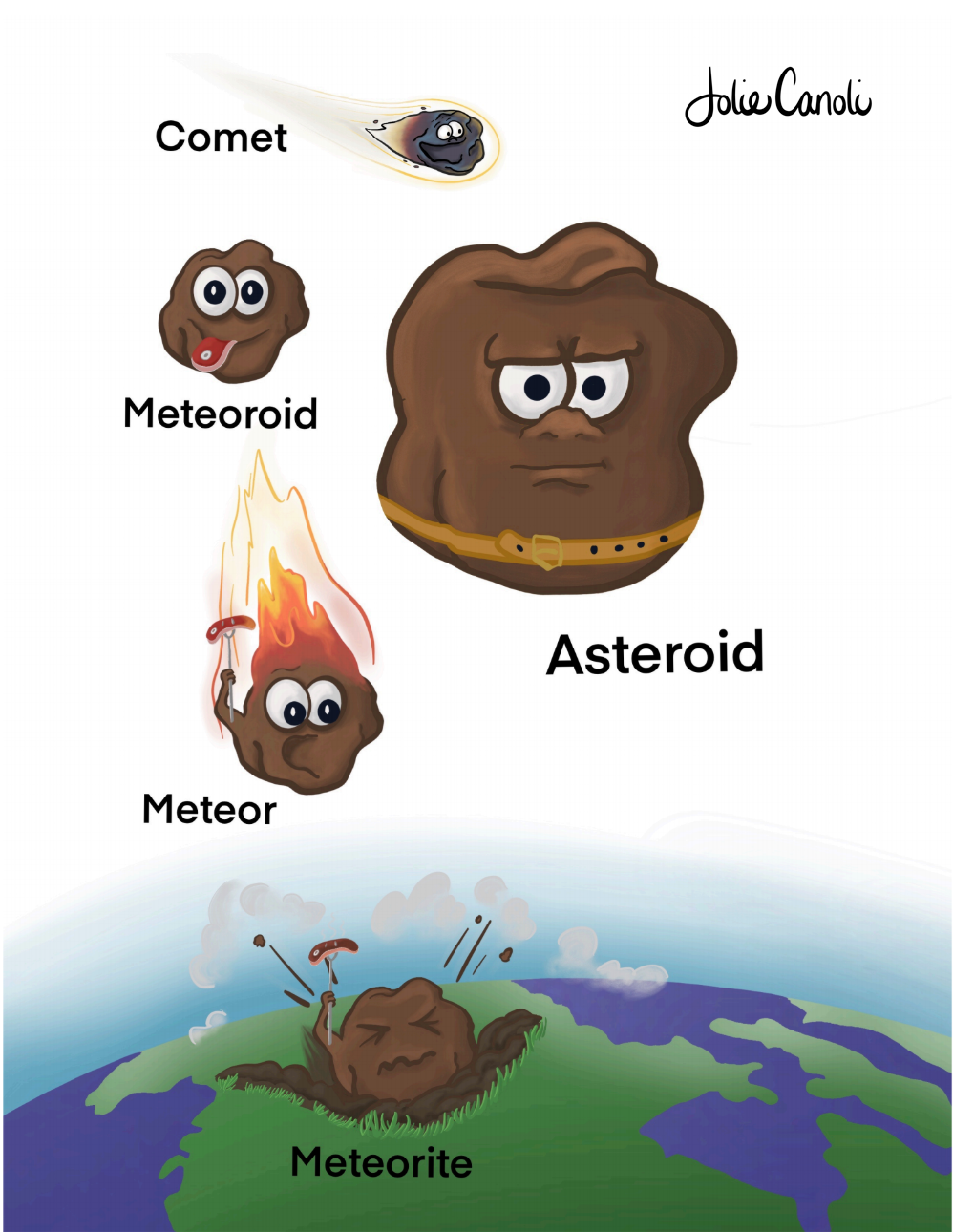
Asteroids and Meteoroids and Comets

Asteroids are pieces of rock and iron that orbit the Sun.
Meteoroids are smaller bits of material that fly through space.
Comets orbit the Sun and are made of ice, dust and rock.
Asteroids :
Asteroids are known as minor planets although they can range in size from a few metres across to the largest – Ceres - which is almost 1000 km wide. Many asteroids are found orbiting in a belt between Mars and Jupiter.
Meteoroids :
Meteoroids travel at great speed. When they enter Eorth's atmosphere, they bum up due to friction with the air. These streaks of light ore called meteors or shooting stars. If meteors don't burn up completely, due to their large size, they hit Earth's surface. These are called meteorites. The Barrington Crater in Arizona, USA, was formed when a 30-50 metre iron meteorite hit Earth about 50000 years ogo. It is one of about 120 impoct craters on Earth.
Comets :
There are billions of comets orbiting the Sun. A comet doesn't have a tail for most of its orbit. As a comet moves closer to the Sun, it begins to warm up. Gas and dust from the nucleus or solid icy centre of the comet begin to form a cloud or a coma around the nucleus. The Sun and its solar wind blow the coma into two tails - one of gas and one of dust. As the comet moves away from the Sun, the tails shrink.
Halley's comet is the best known periodic comet with the first recorded sighting being in China in 240 BC. It returns to Earth every 75-76 years. Its next visit to the inner solar system will be the summer of 2061.
AMAZING FACTS about Our Solar System :
A comet's tail can be millions of kilometres long.
Over 9 000 asteroids hove been located and named.
An asteroid, colled Ido, has its own moon called Dactyl.
Halley's comet lost visited Earth in 1986.


